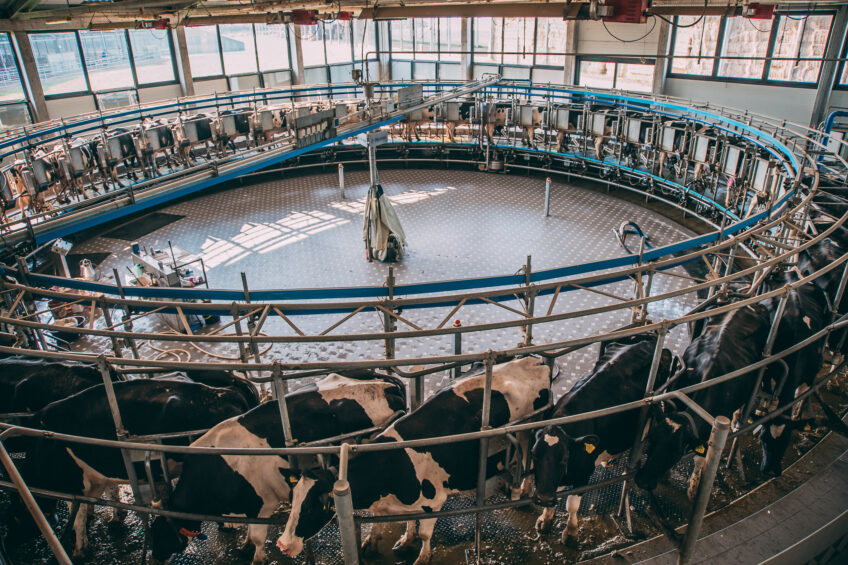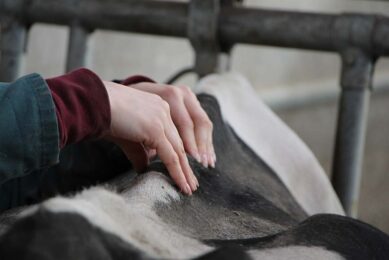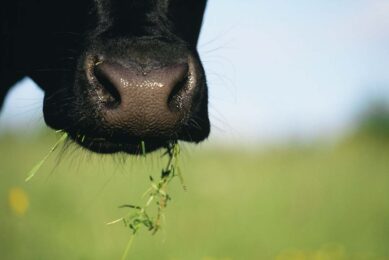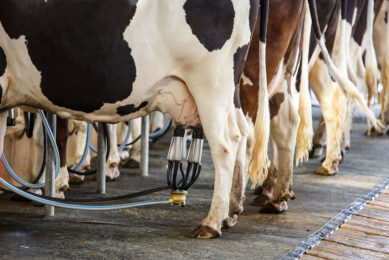Milking 5,500 cows in Croatia

With 5,500 milking cows and another 9,500 followers, bulls and dry cows the Osatina company in Croatia casts itself as Europe’s biggest dairy farm.
Owned and founded by Mirko Ervacic back in 1992, the Osatina group has grown steadily in its 26 years of existence to operate dairy farms, a pig fattening unit, a fruit and vegetable enterprise plus energy production.
The company started off as an agricultural pharmacy with 3 employees but is now a thriving multi-pronged business with 1,100 employees.

Dairy and beef
Osatina runs 4 separate dairy farms in its group with a total of around 15,000 head of livestock; Tomasanci, Ivankovo and Slascak, the first 2 being the main milking farms and the third is a heifer rearing and beef rearing unit. The Tomasanci farm was purchased in 2002 and runs 2,500 milking cows plus 2,500 calves, heifers and bulls. One year later the group purchased the Ivankovo farm which now has 3,000 milking cows and 2,000 followers and bulls. There are an additional 5,000 heifers of various ages and bulls on the Slascak farm and at another farm called Podgorac. When owner Mirko Ervacic purchased the farms dairy production was the most profitable of all the livestock sectors in Croatia as the country does not produce enough milk to satisfy national demands.
140,000 litres of milk per day
Today, Osatina is the largest producer of raw milk in the Republic of Croatia and potentially in the entire European Union. Mr Ervacic said: “Our average yield per cow is 9,000 litres at 3.9% butterfat and 3.45% protein. We produce around 140,000 litres of milk daily making us the largest dairy farm in Croatia. “We sell the milk to the Vindija dairy processor, and from our milk they produce cheese, cream, butter and other dairy products. Raw milk in Croatia sells for around an average of € 0.30 per litre from farm to processor. “On each dairy farm we have 1 production manager, 6 livestock technologists, 1 veterinarian and 8 veterinarian assistants, and about 80 people plus or minus 10 people in production depending on seasonal jobs,” he said.

Concentrates from own feed mill
All the cows on the farms are Holstein Friesian following on from the very first cows that were purchased from the Netherlands and Germany. Cows are milked twice a day by 2 rotary parlours on each farm, each capable of milking 240 cows per hour. There is a total of 500 hectares used for the dairy farms producing forage for daily use and stockpiled in silos for the winter period. Mr Ervacic said: “Currently on the farms we do not have enough hectares of land for the production of animal feed. On our land we produce corn and wheat for silage. “We produce concentrated feed in our own feed mill specified according to formulations made by top nutritionists. We buy other animal feed from subcontractors and other external suppliers. “Our mill has the capacity to produce 100 tons of feed per day or 25,000 tons per year. We use around 40% to 50% of that ourselves and the rest we sell on the open market.

From slurry to biogas
Osatina operates its own biogas plants where it uses the slurry from the cows to produce energy. The biogas plants were built with a capacity of 9MW of electric energy (6.0 MW biogas and 3.0 natural gas) and 10.2 MW of heat energy. The plan is to expand, after which they would have a total of 15 MW of electric energy and 18 MW of heat energy. Mr Ervacic said: “Slurry from the cows is used in biogas production. Guided by the experience of western European countries, we realised that the production of electricity from biomass is ecologically the most acceptable solution for managing the manure. We also use the energy in our greenhouses for the fruit and vegetable production and in the pig units.”
Croatia ascended into the European Union in 2013 which has had benefits but added challenges for the Croatian farmers. Mr Ervacic sees it as a benefit. He added: “Osatina is the largest milk producer in the Republic of Croatia and has the largest dairy farms in Europe. The privileges of entering the European Union are visible in the forms of access and pre-accession funds for the construction and modernisation of cattle facilities.”
Join 13,000+ subscribers
Subscribe to our newsletter to stay updated about all the need-to-know content in the dairy sector, two times a week.










